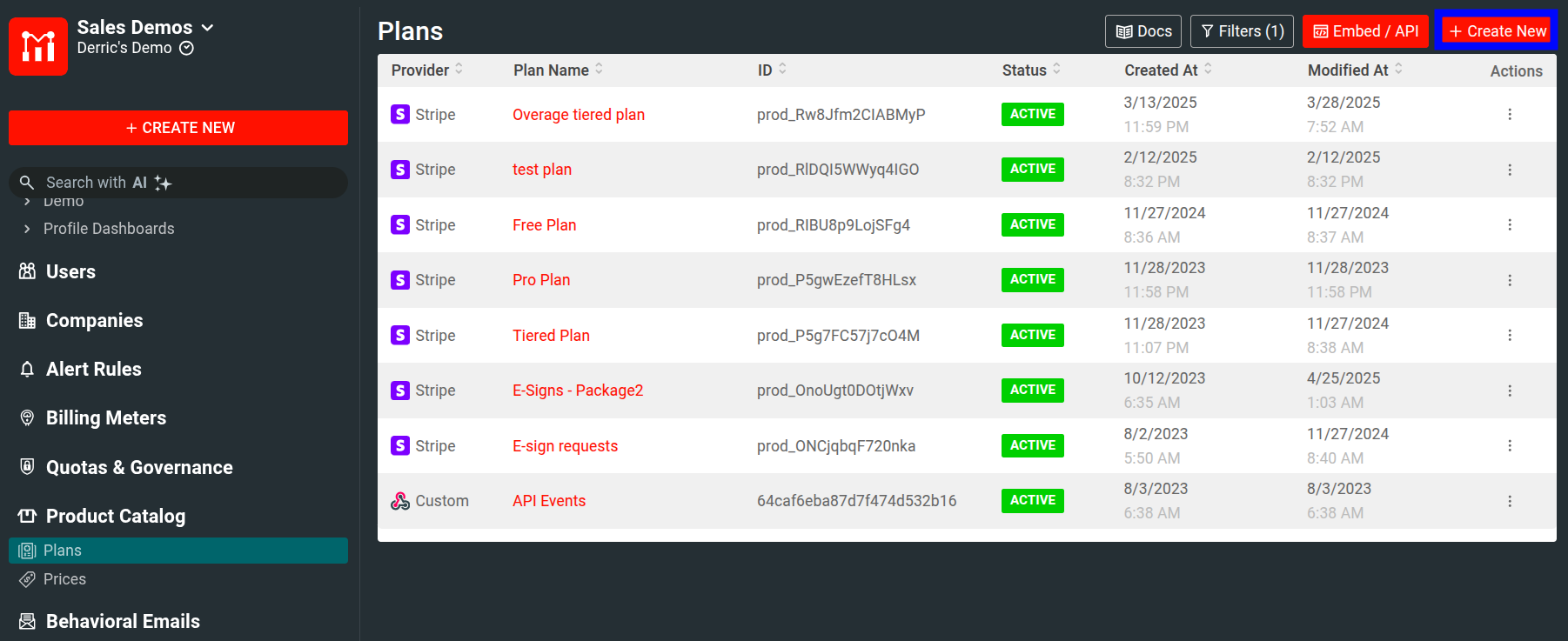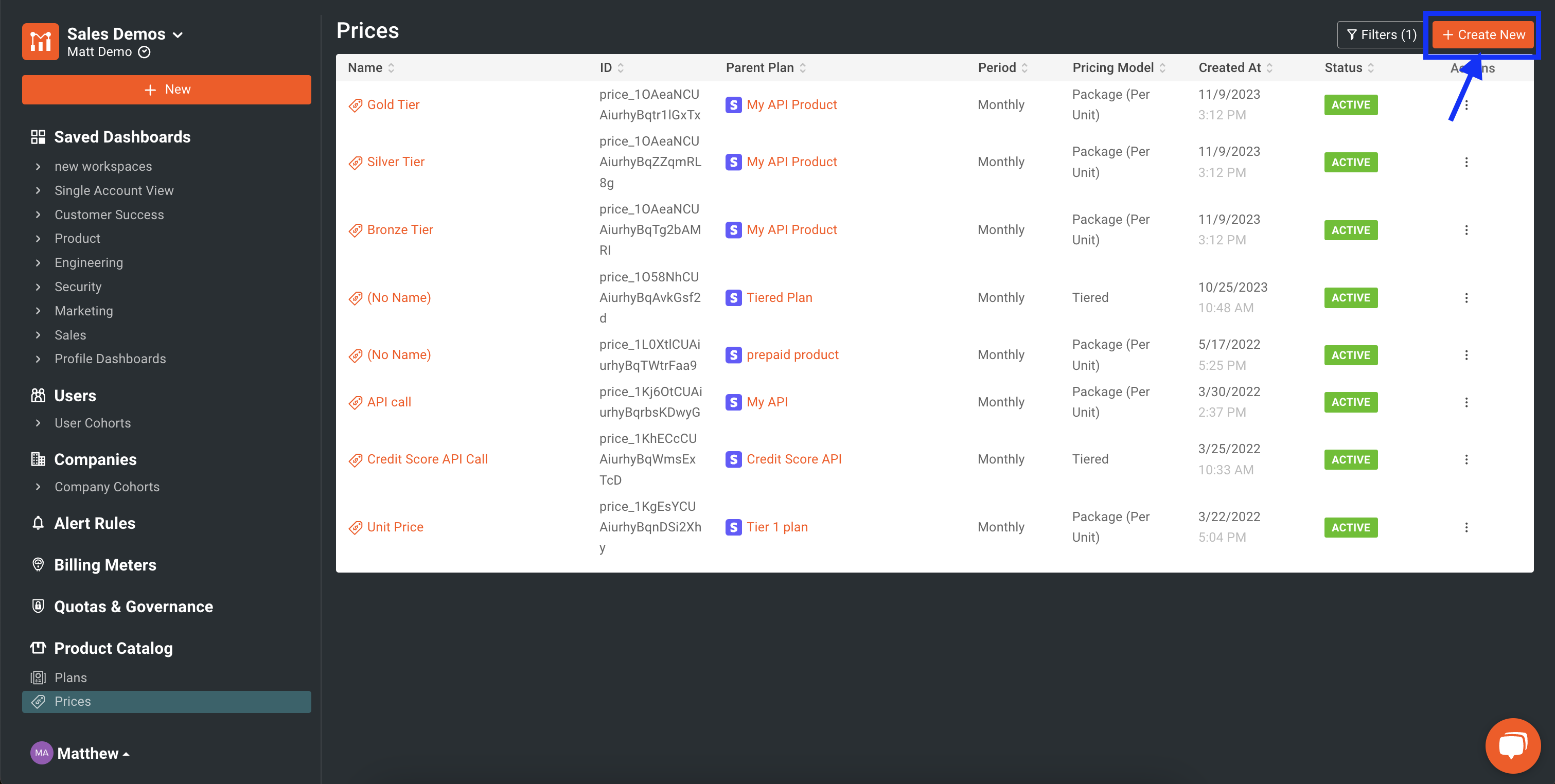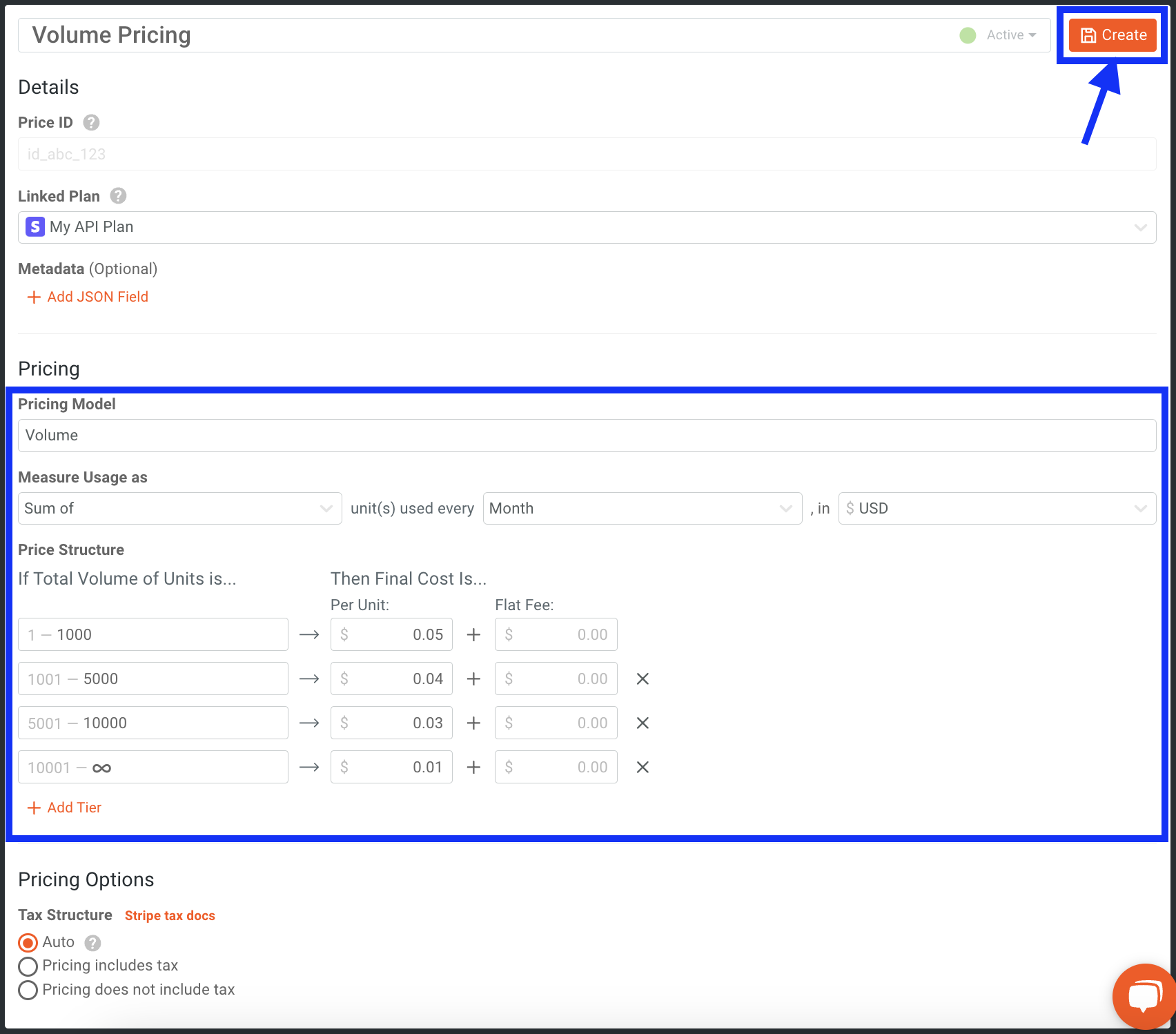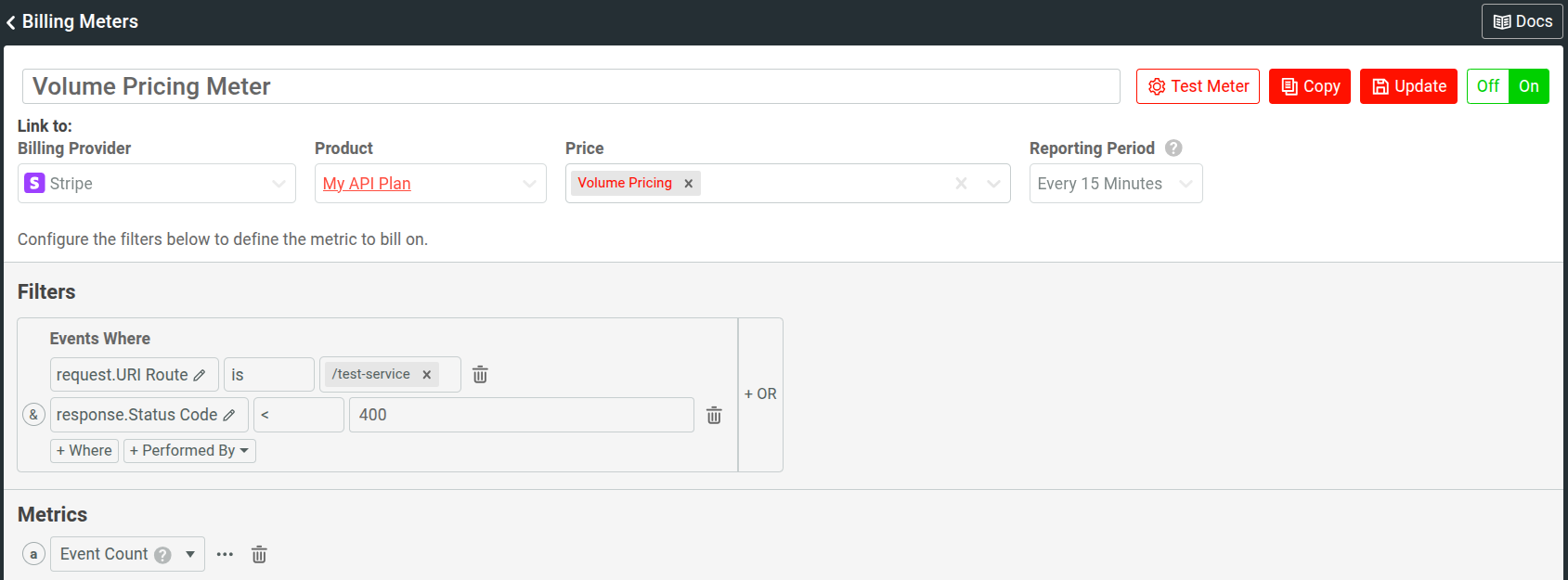Implementing Volume-Based Pricing
When monetizing APIs, a popular approach is volume-based pricing. Of all the monetization models you can apply to your APIs, volume-based pricing is one of the easiest to implement. This blog will cover the basics of applying volume-based pricing to your APIs so your customers can be billed accordingly. Let’s start by looking at the finer details of volume-based pricing regarding monetized APIs.
What is volume-based pricing?
Volume-based pricing is a billing strategy commonly used to monetize APIs. This approach adjusts the cost based on the volume of usage. Typically, usage is measured by the number of API calls or data transferred. This pricing model is designed to cater to diverse user bases, from startups to large enterprises, by offering flexible pricing that aligns with their usage levels. With volume-based pricing, the unit price traditionally goes down as usage increases.

Why Implement Volume-Based Pricing?
As mentioned, in most volume-based pricing models for APIs, the price per API call typically decreases as the volume of usage increases. This pricing structure incentivizes higher usage while making the service more cost-effective for large-volume users. Here are a few facets and benefits of volume-based pricing.
Tiered Pricing Structure
API providers often use a tiered pricing model. Each tier has a set range of API calls, and the cost per call decreases as you move to higher tiers. For example, the first 1,000 calls might cost 10 cents each, but calls 1,001 to 10,000 might cost only 8 cents each, and so on.
Encouraging Higher Usage
Volume-based pricing encourages users to increase API usage since the unit cost becomes more economical at higher volumes. This can be particularly appealing for growing businesses anticipating increased API usage.
Cost Predictability
While the per-call cost decreases, customers can also predict their expenses more accurately as they understand how much the cost will reduce as they scale up. This makes cost a very linear calculation, one that is easy to forecast.
Balancing Accessibility and Revenue
For API providers, this model helps balance making their services accessible to smaller users (who might be sensitive to high costs at low volumes) while still generating significant revenue from larger customers.
Custom Agreements for Very High Volumes
Some API providers might negotiate custom pricing agreements for high-volume users, which could deviate from the standard tiered model to better suit large clients’ specific needs. These agreements can still keep the essence of volume-based pricing but on a more customizable level.
A massive amount of benefits can be derived from a relatively simple implementation using volume-based pricing models. It’s easy for customers to understand and a great revenue driver at scale.
What is Moesif?
Regarding API monetization and implementing volume-based pricing, Moesif is a go-to solution for making implementation easy. At its core, Moesif is an advanced API analytics and monetization platform. Within the platform, users can uncover critical insights into how their APIs are being used and efficiently monetize their existing APIs. It’s designed to help companies optimize, troubleshoot, and secure their API infrastructures, with a strong emphasis on aiding in effective API monetization strategies. Let’s look at some functionality in greater detail:
API Usage Analytics
Moesif allows businesses to track and analyze how their APIs are used. This includes detailed data on API calls, error rates, endpoint performance, and user behavior patterns.
API Monetization Capabilities
A standout feature of Moesif is its robust support for API monetization, allowing users to track and charge users for API usage. API monetization with Moesif enables businesses to:
- Track Billing Metrics: Understand and monitor API usage in the context of billing and revenue generation.
- Identify Revenue Opportunities: Discover which features or endpoints are most popular and generate the most revenue.
- Implement Volume-Based Pricing: Easily track and manage usage-based billing, such as volume-based pricing models.
Customer Insights
Moesif’s analytics capabilities provide deep insights into customer usage patterns, helping businesses understand which customers are the most active or potentially at risk of churning. This also helps companies determine which APIs they should charge for and how much they can charge for usage.
Real-Time Monitoring and Alerts
The platform offers real-time monitoring of API performance, alerting businesses to issues as they arise, such as an increase in latency, enabling quick response and resolution.
What is Moesif’s Product Catalog?
Moesif’s Product Catalog is a comprehensive tool designed to manage billing plans and prices for APIs. It serves as a centralized platform where business owners can create, manage, view, and archive various billing plans and prices, streamlining the product creation process within Moesif. This integration ensures API product compatibility with Moesif’s API metering and billing solution. The key benefits of using Moesif’s Product Catalog include:
- Ease of Use: Business owners can create plans and prices directly within the Moesif UI, eliminating the need to access multiple systems.
- Integration with Billing Systems: Moesif integrates with your billing system, which remains the system of record. Any plan or price created in Moesif will also appear in your billing provider, ensuring seamless accounting and financial management.
- Support for Multiple Billing Systems: The Product Catalog is designed to work with multiple billing systems simultaneously, such as Zuora for enterprise customers and Stripe for self-service options.
How to implement volume-based API pricing
To implement volume-based pricing, we will use Stripe and Moesif. With Moesif’s Product Catalog and Billing Meter functionality, we can do all this right within the Moesif platform!
NOTE: You need to enable and configure the Stripe plugin in Moesif for the steps below to work. The simple steps to set that up are available here.
Create the Plan
After logging into Moesif, navigate to the Product Catalog by clicking the corresponding menu item in the left-side navigation. On the Plans page, click the Create New button in the top-right.

On the Create Plan screen, you’ll fill out the plan name and select the billing provider. In this case, we will select Stripe. Once done, click on the Create button in the top-right.

Create the Price
Next, we will create the Price in Moesif by clicking on the Price menu item under the Product Catalog on the left-side menu. On the Price screen, click the Create New button in the top-right.

On the next screen, you’ll add the price name and select the Linked Plan from the dropdown. In this case, we will select “My API Plan,” the plan we made in the previous step above.
Under Pricing, we will select the volume Volume Tiers pricing model. You can add each of your tiers under the Price Structure section. You can click the Add Tier button at the bottom if you need another tier. You’ll see we’ve added four tiers in the example below.

Then specify the usage calculation and aggregation method for your pricing model:
- The Stripe Price Meter option uses Stripe Meters for usage-based billing.
We recommend choosing this option. For this option, you must:
- Select the Stripe Meter to attach the price to. You can also create a new Stripe meter by selecting Create New Meter and then attach the new meter.
- Specify the period of time to aggregate the usage over.
- The Legacy Usage Aggregation uses Stripe’s legacy usage-records billing.
Create the Billing Meter
Now that the plan and price have been created, we will create the Billing Meter to record the usage and send it to the correct plan in Stripe. To do that, we will click on the Billing Meters menu item in the left-side menu. On the Billing Meters screen, click the Add Billing Meter button in the top-right of the screen.
This will bring you to the Create Billing Meter screen. Here, you will give the meter a name, link it to our plan and price under the Link to section, and create our filter and metrics. Below is an example of a meter for a specific API endpoint (“/test-service”) that will count each API call and attribute it to the “Volume Pricing” price that we created earlier. Once you’ve created your meter, click Create in the top-right to create and activate the meter.

Profit
With this in place, API usage will be billed based on your volume-based pricing model. This example has shown you how easy it is to create a volume-based pricing model and track usage towards it with Moesif and Stripe. Of course, this could also be done with other billing providers, including Chargebee, Zuora, and many others.
Try it out
Want to try this out for yourself? Be monetization-ready in minutes with Moesif by signing up for a free trial. Want to know how to scale out an enterprise-grade monetization solution? Fill out the form below and an API monetization expert will get you started today.





